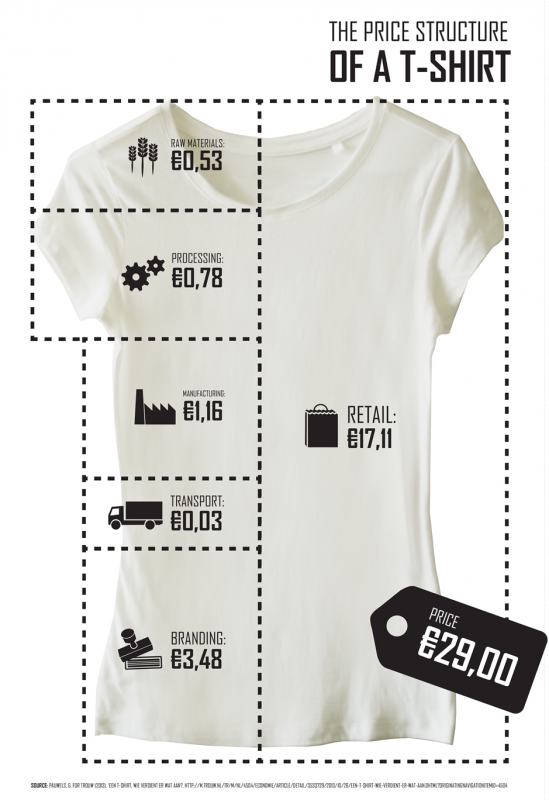Gespeichert von dilemma am

If we pay €29,00 for a t-shirt, do we realize the amount that goes to the cotton farmer, or the seamstress? Every day people in third world countries make long days just so you can wear that shirt that you like so much. Are we aware of the way that the money is being split between the involved parties?
A shirt that we buy in the shop for €29,00 is made for only 8% of that price, that’s around €2,50. So just realize for a moment that just 8% of that 29 euro’s actually makes it to the people that made the shirt. That means that around 92% of the money is made by companies that didn’t do a lot to make that shirt. For instance, a seamstress in India earns eighteen cents per t-shirt, that’s less than one percent of the retail price, and let’s not start about the cotton farmers who make even less.
To make a t-shirt you need 1 kg of raw cotton. A cotton farmer gets €0,53 for a kilo. The farmers are not able to process the cotton themselves, so they have to sell their cotton to big cotton gin mills. Those factories stand in between the farmers and the world market which makes it difficult for the farmers to get a good price for their cotton.
The manufacturer of the t-shirts only gets paid when he delivers his product at the harbor of Cittagong, the second city of Bangladesh. Most of the clothing factories can be found in Dhaka, the capital of Bangladesh that lies 250 kilometers from Cittagong. The road is in such a bad shape that a lot of times the load is damaged or doesn’t make it at all. This affects the profit of the manufacturers in a bad way, since they won’t get paid for the damaged goods.
So the next time you buy a shirt, realize where it comes from and what it’s been trough.
Written by Ilse
Source: Pauwels, G. for Trouw (2013). ‘Een T-shirt, wie verdient er wat aan?’, http://m.trouw.nl/tr/m/nl/4504/Economie/article/detail/3533729/2013/10/26/Een-T-shirt-wie-verdient-er-wat-aan.dhtml?originatingNavigationItemId=4504


